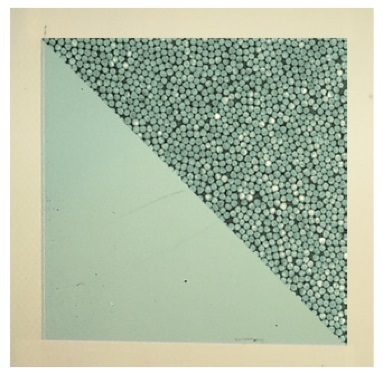Jan. 11, 2018
Recently published research on plasmonic metasurfaces — surfaces with nanoscale features that often exhibit new and unique optical properties — could lead to advances in microscale lenses and other optical components. Miniaturizing these lenses is a step toward improved super-resolution imaging and high-density photonic circuit integration.
The work is a collaboration between Joseph B. Herzog, an assistant professor in the Department of Physics at the J. William Fulbright College of Arts and Sciences, and scientists at the Naval Research Laboratory in Washington, D.C.
The project, led by Jake Fontana at the NRL and published in the journal ACS Photonics, created large area optical metasurfaces with gold nanoparticles. Gold nanoparticles support plasmons, which are oscillating electrons on the gold surface. The vibrating electrons and their collective interactions give rise to the unique optical properties of the metasurface. Dennis Doyle, an undergraduate at the University of Pittsburgh and first author of the paper, fabricated the surfaces with millions of gold nanospheres, precisely controlling subnanometer spacings between each sphere. Accurately controlling gap spacing allowed researchers to show that experimental results agree well with classical (local) electromagnetic models, revealing that the classical model can predict plasmonic and optical properties in subnanometer dimensions down to at least half of a nanometer, which is one-billionth of a meter.
The paper, titled Tunable Subnanometer Gap Plasmonic Metasurfaces, also shows that these metasurfaces exhibit unique optical properties beyond those found in nature. Typically, the real part of the refractive index, an important optical material property, is limited to less than 3 for naturally occurring materials. The research team was able to fabricate metasurfaces with values as high as 5, opening the door to new photonic and optical applications.
Other scientists who contributed to the project include N. Charipar, S. Trammell, R. Nita, J. Naciri, and A. Pique from the NRL; and Christos Argyropoulos, a faculty member at the University of Nebraska-Lincoln. The project was supported through the Office of Naval Research. Doyle was a 2017 summer student under the Naval Research Enterprise Internship Program (NREIP). Herzog and Argyropoulos were 2017 fellows in the Office of Naval Research Summer Faculty Research Program.













